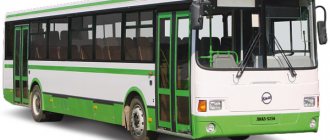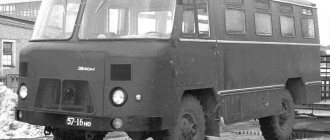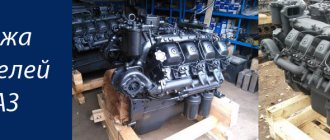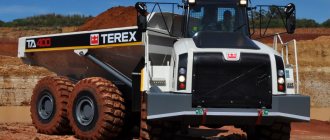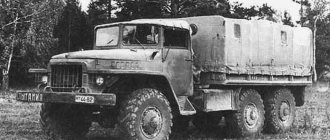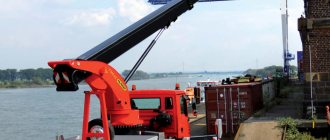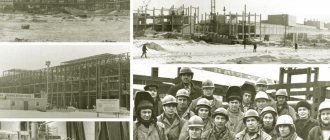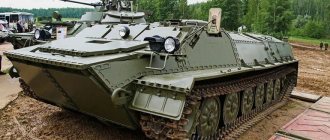Technical characteristics of MAZ-105
[/td]
ParametersValueModificationMAZ 105 (MAZ 105065)PurposeUrbanOverall dimensions, mm17995-2500-3046Base, mm6000+6390Wheel track (front/rear), mm2063-1825-1825Outer turning radius, mm11630Height of step above road level, mm3 45 Floor height on the middle door platform, mm 590 Aisle width between seats , mm790Luggage compartment volume, m3Fuel tank volume, lLoad on front axle, kg7100Load on rear axle, kg11300/9600Gross weight, kg28000Number of seats30, 33, 36Nominal capacity/max., persons 175, 170, 160Maximum speed, km/h75D engineMercedes- Benz OM906LA (E-3) Engine power, kW (hp) 205 (279) Engine capacity, l6.37 Gearbox Voith Diwa D851.3E (automatic) Suspension front/rear axle dependent, pneumatic with telescopic shock absorbers Rear axle rigid beam with double spaced transmission Wheels, 8.25x22.5 Tires 275 Notes An especially large-capacity articulated city bus is designed to transport passengers on city routes. At the customer's request, the following can be installed: sliding windows, roof fans, and an electronic information system.Since 1997, the Minsk Automobile Plant (Belarus) began producing a new model, the MAZ 105. This is a bus with a soft accordion-shaped joint in the middle part. Sufficient capacity is provided by the additional rear section. The length of the bus is 17.98 m, width – 2.5 m, height – 3.13 m. Due to the fact that the car has a large capacity, it is an almost ideal solution for cities with large passenger flows. The four doors of the model are quite wide, and the floor is low, which is very convenient; there is also a ladder and a special place with a mount for a wheelchair.
MAIN TECHNICAL CHARACTERISTICS OF THE MAZ-105 BUS
At first, until 2001, the models were equipped with RENAULT MIDR 06.20.45 R41 (EURO-1) engines with a power of 279 hp, engine capacity - 6.18 liters and fuel consumption per 100 km - 33 liters. Then, starting in 2004, the MAZ 105 bus was equipped with another engine - Mercedes-Benz OM 906 LA (Euro-3) with a power of 279 hp, engine capacity - 6.37 liters with a consumption of 30 liters per 100 km. The first models were equipped with a factory-assembled engine - MMZ D260.5, with a power of 230 hp, a volume of 7.12 liters and a fuel consumption per 100 km of 32 liters. The fuel used to operate the engine is diesel. The motor can operate in a temperature range of -25°C - + 40°C.
The car has seats for 30/33/36 people with a total passenger capacity of 160-190. The total weight of the loaded vehicle is 26.5 - 28.0 tons, while the loads that fall on the axles are distributed as follows: front - 6.5-7.1 tons, middle - 11.3-11.5 tons, rear - 8, 5-9.5 tons. The bus interior is additionally equipped with an independent heater, ABS and an information board. The model's windows are tinted and the seats are made of plastic. The size of the passage between the seats is 0.79 m. The machine can operate on roads of categories I and II.
Bus MAZ 105
Considering the technical characteristics of the MAZ 105, we can say that one of the advantages is that the floor is located quite low - 0.35 m, the middle entrance is equipped with a special ladder. The bus interior has wide solid windows, which creates additional comfort. Seats with semi-soft upholstery in a 2x2 arrangement. The platform inside the accordion is quite convenient, as it has a wall on which you can lean and handrails from the ceiling to the floor. The upper handrails, painted in a pleasant orange color, have straps for holding them in the interior.
However, despite all the advantages, the bus also has its disadvantages, one of which is the location of the engine in the front section, which reduces the space for seating passengers. In the rear part of the cabin, the side platform for passengers is very small, due to which the end platform becomes insufficiently comfortable. In addition to this, the MAZ 105 engine, whose fuel consumption per 100 km is very high, is not environmentally friendly enough. Even those diesel engines (Euro-4, Euro-5), which have begun to be installed on the latest models, cannot ensure clean exhaust gases. There is another small drawback - due to the fact that the interior and engine cooling systems are combined, work is complicated in the hot season.
There is a standard partition between the passenger compartment and the driver's seat and there is a separate exit. The driver's seat on an air cushion is adjustable, an independent Webasto or Eberspacher air heater of 2.0-2.2 kW is installed. The driver's cabin contains a Festo door control drive and radio equipment. Behind the driver's seat is the switching box, which contains the fuses, rotary wiper, pulse wiper, starter and intermediate relays, as well as diode assemblies.
The prototype of this model was the German Neoplan-N4018, in which the drive axle was rear. In the car of the Minsk plant, the leading axle was the middle axle - a rigid beam with a spaced double gear. This change was made after testing on icy conditions did not produce the expected results.
Due to all these improvements to the MAZ 105, the price in the final version has increased significantly, but it pays off by reducing downtime and repair costs. At first, the cars were equipped with a Praga 5PS 114 gearbox, which had five stages, but it did not live up to the expected results, which is why it was replaced with a more modern one in 2001.
The latest technical developments of the model include the Voith DIVA 3E automatic transmission, which has only three stages. Due to the differential-torque converter combination, a fairly high engine efficiency is ensured. In this development, the friction discs wear out less, since the number of shifts has decreased. The torque converter in the MAZ 105 is located in the box in the middle and is also a retarder. The gearbox is also equipped with electronics that control and record shifts and braking. Such automation makes the driver’s work much easier and more enjoyable.
If the model of this bus is equipped with an MMZ or Renault engine, then the engine compartment takes up space from floor to ceiling and one window opening. If a Mercedes is installed, the window opening is not covered by the engine compartment. The power mechanism assembly is attached to the frame by four supports, consisting of a shock absorber attached to the bracket with bolts.
The MAZ 105 bus has an engine brake flap, which is one of the components of the auxiliary brake system, thereby simultaneously increasing the operating time of the main brake system. The steering column has a hydraulic booster.
The engine fuel system is of a split type. It includes a fuel tank, which is located on the right, attached with clamps to the frame, fuel wires, pumps, injectors and a fine filter. Low-pressure fuel wires made of polyamide are packaged in a sheath that protects them and are attached with clamps to the body.
Main technical characteristics of a comfortable city bus
At first, until 2001, the models were equipped with RENAULT MIDR 06.20.45 R41 (EURO-1) engines with a power of 279 hp, engine capacity - 6.18 liters and fuel consumption per 100 km - 33 liters. Then, starting in 2004, the MAZ 105 bus was equipped with another engine - Mercedes-Benz OM 906 LA (Euro-3) with a power of 279 hp, engine capacity - 6.37 liters with a consumption of 30 liters per 100 km. The first models were equipped with a factory-assembled engine - MMZ D260.5, with a power of 230 hp, a volume of 7.12 liters and a fuel consumption per 100 km of 32 liters. The fuel used to operate the engine is diesel. The motor can operate in a temperature range of -25°C - + 40°C.
The car has seats for 30/33/36 people with a total passenger capacity of 160-190. The total weight of the loaded vehicle is 26.5 - 28.0 tons, while the loads that fall on the axles are distributed as follows: front - 6.5-7.1 tons, middle - 11.3-11.5 tons, rear - 8, 5-9.5 tons. The bus interior is additionally equipped with an independent heater, ABS and an information board. The model's windows are tinted and the seats are made of plastic. The size of the passage between the seats is 0.79 m. The machine can operate on roads of categories I and II.
Considering the technical characteristics of the MAZ 105, we can say that one of the advantages is that the floor is located quite low - 0.35 m, the middle entrance is equipped with a special ladder. The bus interior has wide solid windows, which creates additional comfort. Seats with semi-soft upholstery in a 2x2 arrangement. The platform inside the accordion is quite convenient, as it has a wall on which you can lean and handrails from the ceiling to the floor. The upper handrails, painted in a pleasant orange color, have straps for holding them in the interior.
However, despite all the advantages, the bus also has its disadvantages, one of which is the location of the engine in the front section, which reduces the space for seating passengers. In the rear part of the cabin, the side platform for passengers is very small, due to which the end platform becomes insufficiently comfortable. In addition to this, the MAZ 105 engine, whose fuel consumption per 100 km is very high, is not environmentally friendly enough. Even those diesel engines (Euro-4, Euro-5), which have begun to be installed on the latest models, cannot ensure clean exhaust gases. There is another small drawback - due to the fact that the interior and engine cooling systems are combined, work is complicated in the hot season.
There is a standard partition between the passenger compartment and the driver's seat and there is a separate exit. The driver's seat on an air cushion is adjustable, an independent Webasto or Eberspacher air heater of 2.0-2.2 kW is installed. The driver's cabin contains a Festo door control drive and radio equipment. Behind the driver's seat is the switching box, which contains the fuses, rotary wiper, pulse wiper, starter and intermediate relays, as well as diode assemblies.
The prototype of this model was the German Neoplan-N4018, in which the drive axle was rear. In the car of the Minsk plant, the leading axle was the middle axle - a rigid beam with a spaced double gear. This change was made after testing on icy conditions did not produce the expected results.
Due to all these improvements to the MAZ 105, the price in the final version has increased significantly, but it pays off by reducing downtime and repair costs. At first, the cars were equipped with a Praga 5PS 114 gearbox, which had five stages, but it did not live up to the expected results, which is why it was replaced with a more modern one in 2001.
The latest technical developments of the model include the Voith DIVA 3E automatic transmission, which has only three stages. Due to the differential-torque converter combination, a fairly high engine efficiency is ensured. In this development, the friction discs wear out less, since the number of shifts has decreased. The torque converter in the MAZ 105 is located in the box in the middle and is also a retarder. The gearbox is also equipped with electronics that control and record shifts and braking. Such automation makes the driver’s work much easier and more enjoyable.
City bus MAZ 105
The front suspension is pneumatic, independent, has two air springs, a shock absorber and a body position adjuster. In this case, the suspension has two telescopic types of hydraulic shock absorbers with hydraulics and double-acting, attached to the brackets of the body and arms. The rear suspension provides for the installation of a bevel gear offset from the transverse axis, and a double final drive with spacing. Moreover, it is pneumatically dependent, consisting of 4 air cylinders, shock absorbers and one position regulator.
The maximum speed that a bus can reach is 70-75 km/h. At the same time, the fuel consumption of the MAZ 105 depends on which engine is installed on the car. Quite unusual is the car’s equipment with a differential lock, with the help of which, after stopping on ice or hard-packed snow, it is possible to move away without any problems. This mechanism is controlled by an electro-pneumatic valve, the activation and deactivation of which is located on the front panel.
Despite the fact that after the installation of new Mercedes engines on the MAZ 105 model, the price has increased, they continue to remain in great demand in passenger traffic in large cities.
Affordable cost and ease of operation are the main advantages of the bus
If the model of this bus is equipped with an MMZ or Renault engine, then the engine compartment takes up space from floor to ceiling and one window opening. If a Mercedes is installed, the window opening is not covered by the engine compartment. The power mechanism assembly is attached to the frame by four supports, consisting of a shock absorber attached to the bracket with bolts.
The MAZ 105 bus has an engine brake flap, which is one of the components of the auxiliary brake system, thereby simultaneously increasing the operating time of the main brake system. The steering column has a hydraulic booster.
The engine fuel system is of a split type. It includes a fuel tank, which is located on the right, attached with clamps to the frame, fuel wires, pumps, injectors and a fine filter. Low-pressure fuel wires made of polyamide are packaged in a sheath that protects them and are attached with clamps to the body.
The front suspension is pneumatic, independent, has two air springs, a shock absorber and a body position adjuster. In this case, the suspension has two telescopic types of hydraulic shock absorbers with hydraulics and double-acting, attached to the brackets of the body and arms. The rear suspension provides for the installation of a bevel gear offset from the transverse axis, and a double final drive with spacing. Moreover, it is pneumatically dependent, consisting of 4 air cylinders, shock absorbers and one position regulator.
The maximum speed that a bus can reach is 70-75 km/h. At the same time, the fuel consumption of the MAZ 105 depends on which engine is installed on the car. Quite unusual is the car’s equipment with a differential lock, with the help of which, after stopping on ice or hard-packed snow, it is possible to move away without any problems. This mechanism is controlled by an electro-pneumatic valve, the activation and deactivation of which is located on the front panel.
Despite the fact that after the installation of new Mercedes engines on the MAZ 105 model, the price has increased, they continue to remain in great demand in passenger traffic in large cities.
